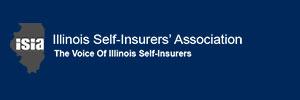The Contribution Act Allows Contribution between Two Principals Vicariously Liable for the Negligence of a Common Agent
The Contribution Act Allows Contribution between Two Principals Vicariously Liable for the Negligence of a Common Agent
March 2019
By: Courtney Morso Driscoll
The Illinois Supreme Court recently held one principal could seek contribution from another principal, both of whom were held vicariously liable due to the acts of the same agent. In Sperl v. Henry, 2018 IL 123132 (IL), C.H. Robinson Company (“CHR”) and Toad L. Dragonfly Express, Inc. (“Dragonfly”) were both found vicariously liable due to the acts of DeAn Henry. CHR was a logistics company that contracted with licensed carriers to transport goods to its customers, one of which was Jewel Food Stores (“Jewel”). Henry leased a semi-tractor to Dragonfly, a federally licensed motor carrier. Through Dragonfly, Henry agreed to deliver goods for CHR to Jewel.
In the course of her delivery, Henry ran over multiple vehicles, killing plaintiffs, Joseph Sperl and Thomas Sanders, and seriously injuring plaintiff William Taluc. As a result of this accident, suit was filed against Henry, CHR, and Dragonfly for wrongful death, survival, and personal injuries.
Henry admitted negligence and liability. Dragonfly admitted liability and “united” negligence with Henry. CHR denied liability and filed a contribution action against Henry and Dragonfly. At trial, the jury found CHR was vicariously liable for Henry’s action because Henry was an agent of CHR. The jury awarded the plaintiff’s $23,775,000.00, finding CHR, Dragonfly, and Henry were jointly and severely liable for the damages.
Expert Testimony Not Necessary For Use Of Post-Accident Photographs
Expert Testimony Not Necessary For Use Of Post-Accident Photographs
March 2019
Peach v. McGovern, 2019 IL 123156 (January 2019)
In this case, the Supreme Court of the State of Illinois finally put to rest whether or not expert testimony is required when using photographs of vehicle damage to argue no connection between an accident and claimed injuries. Plaintiff, Kevin Peach, was stopped at a stop sign in his Nissan pickup truck when he was rear-ended by defendant McGovern’s vehicle. Defendant testified she spaced out and let her foot slip off the brake; her car rolled forward and tapped his truck. She testified she never pressed the gas pedal once she had stopped.
Post-accident photographs showed that plaintiff’s back bumper was dented and the defendant’s front end was cracked, however, it was never determined if the accident caused the crack. Both parties testified photographs were accurate representations of the conditions of their vehicles immediately after the accident.
Employee Barred from Untimely Attempt to Intervene in Employer’s Subrogation Suit
Employee Barred from Untimely Attempt to Intervene in Employer's Subrogation Suit
March 2019
In A&R Janitorial v. Pepper Constr. Co., 2018 IL 123220, the Supreme Court of Illinois was faced with the unique circumstance of an employee attempting to intervene in a subrogation lawsuit brought by her employer after the statute of limitations had expired for the employee to institute her own lawsuit. The Supreme Court of Illinois held that the employee could not intervene in the employer's lawsuit based on the doctrine of res judicata.
In addition to seeking workers' compensation benefits, an employee may file his or her own personal injury action against a third-party tortfeasor in order to recover damages for a work injury. Under Section 5(b) of the Illinois Workers' Compensation Act (the "Act"), the employer is entitled to reimbursement of its workers' compensation benefits out of the proceeds of any settlement or judgment obtained by the employee in that third party suit, less the payment of a 25% attorney's fee and pro rata share of costs. 820 ILCS 305/5(b). In addition, the employer has a right to intervene in the employee's action in order to protect its workers' compensation lien in all court orders entered after hearing and judgment. 820 ILCS 305/5(b). In most instances, the employee will timely file a lawsuit against the third-party and the employer will assert its lien rights by intervening in said action.
What About My Credit?
What About My Credit?
January 2019
By: Francis M. Brady and Farrah L. Hagan
Some years back, the Appellate Court taught an anatomy lesson. The shoulder, it concluded in the case of Will County Forest Preserve v IWCC, is not part of the worker’s arm, but of her body as a whole. At first blush, that holding’s effect on the issue of credit seems to be for- ward looking: since shoulder injuries were reclassified from specific loss awards to recoveries under the whole person, they are no longer available to offset future accidents.
But while Will County clearly has that impact on damages paid after its date, less clear is how it operates on compensation recovered for upper extremity injuries before its decision. Specifically, can a Respondent use the prior settlement or award to reduce the value of a claim for the same arm the worker brings after Will County? Take, for example, a situation involving a worker diagnosed with SLAP lesion and tears of the labrum and rotator cuff due to a post-Will County accident. The worker’s attorney insists the case is worth full value. Investigation, however, reveals the worker got 25% loss of use of the arm in a settlement before Will County. Does that prior recovery afford leverage to negotiate the worker’s lawyer off his full value demand?
Medical Investigation & Argument Wins Over CMS
Medical Investigation & Argument Wins Over CMS
January 2019
By: Marina Takagi Cobb
The Firm was defending a Comp case brought by a petitioner who initially asserted an injury to his foot. While diagnostic imaging of the right foot and ankle showed no fractures, petitioner continued to complain to his orthopedic surgeon of not only right foot pain but, also, right knee discomfort. He asserted he had to “twist(ed) the leg” in the accident. The surgeon diagnosed a right foot crush injury, a right foot contusion, and a right knee sprain/strain, for which the petitioner underwent conservative treatment. Within a month of the alleged incident, the orthopedic surgeon noting the petitioner was exaggerating symptoms and complaints, released him from treatment, and sent him back to full duty.
The petitioner then sought a second opinion from another orthopedic physician. This time, the petitioner alleged right hip pain that was exacerbated by the work incident. The petitioner also complained of shoulder pain and low back pain.
“Oh! What A Tangled Web”
“Oh! What A Tangled Web”
January 2019
By: Farrah L. Hagan
Petitioners can often explain away film of them doing activities outside of their restrictions on just one occasion. The key to effectively using surveillance is to capture more than a single episode. Surveillance is most damning when it shows a pattern of exertion falling outside of existing physical limitations.
Once such surveillance is developed, its existence should be guarded against disclosure. Keeping it secure until trial is often the most effective way of impeaching petitioner’s credibility. Thus, think carefully before sending surveillance video to your IME doctor for review. If you do, you’ll have to turn it over to the petitioner’s attorney before the doctor’s testimony. Once film is in the hands of petitioner, he can inform his testimony accordingly and you can expect he will be ready with an explanation of his activity and how badly he felt afterwards.










